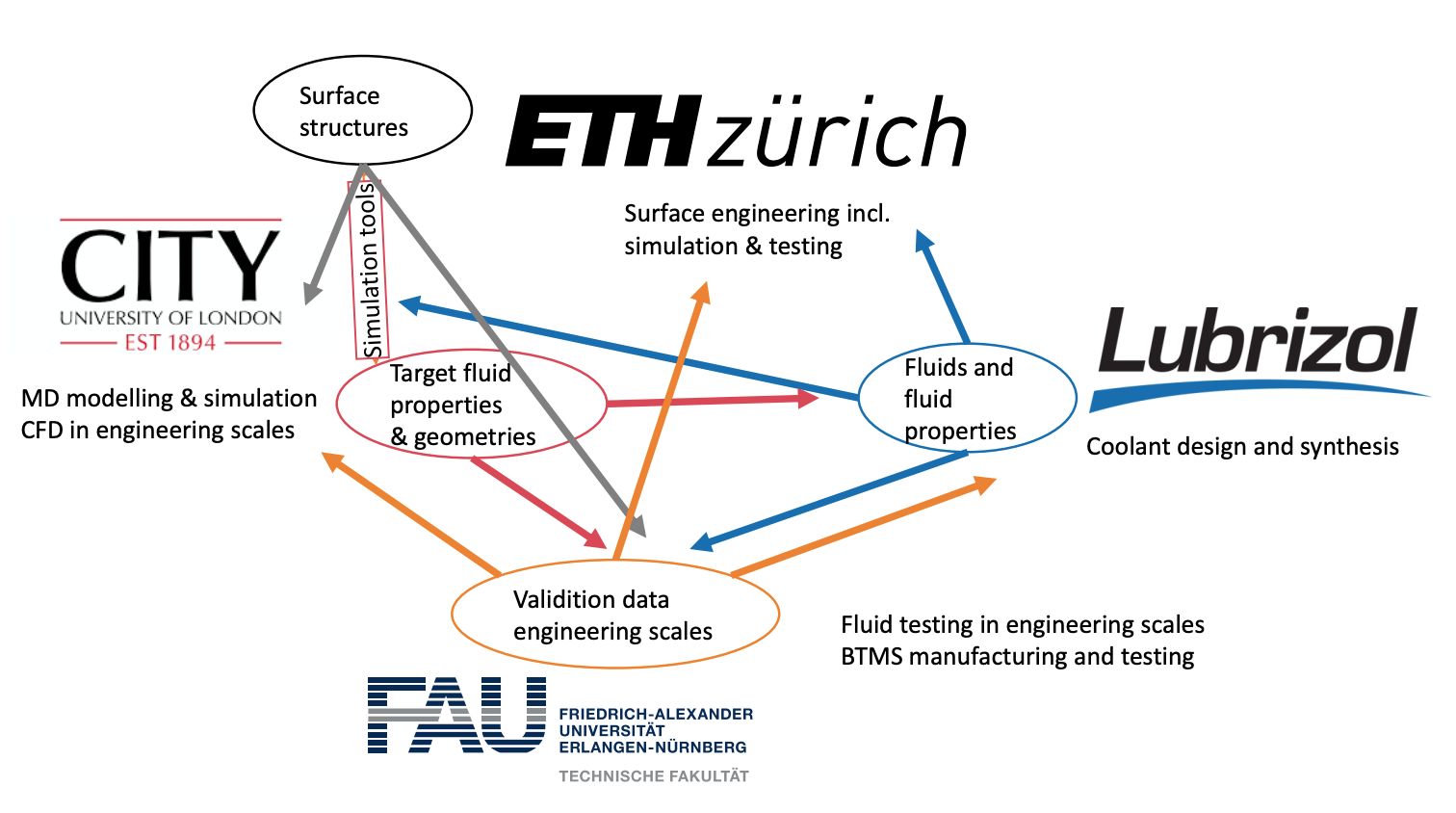
Fluid Systems Technology, FAU Erlangen-Nürnberg
Founded in 1743 with today almost 40,000 students (3,550 of them international students) and about 570 professors and 14,000 members of staff, Friedrich-Alexander University (FAU) is one of the largest universities in Germany. With its five faculties, FAU offers an almost unique scope of subjects with 263 study course, about 50 international. Over the last decades, the University has established its reputation as a top-ranking institution in cutting-edge research. It is firmly anchored in a close network of interdisciplinary co-operations. The faculty of engineering is regularly ranked as one of the top-five universities in Germany with respect to funds of the German Research Foundation per professor.
The research in the institute for fluid systems technology (FST) in the faculty of engineering covers a broad spectrum, starting with basic investigations e.g. on transport processes, particle formation and combustion processes up to the improvement of technical procedures, e.g. in heat engineering or motor combustion. A major methodological focus of the FST is the development and application of optical, mostly laser-based measurement methods. In all research areas, there are close co-operations with national and international partners from academia and industry. The FST is involved in institutions of the Excellence Initiative, namely the Erlangen Graduate School in Advanced Optical Technologies (SAOT) and the Cluster of Excellence Engineering of Advanced Materials (EAM).
Friedrich-Alexander University, Erlangen, Germany

Role in the project
In addition to the role as consortium leader with the tasks in the project organization, milestone planning, reporting and publication of the project results, as well as the promotion of the exchange in the project and beyond the project, FAU specializes in laser diagnostics, flow visualization and thermal measurements. Specific test configurations will be designed and assembled for the project to investigate heat transfer and flow fields on the subsystem and system levels. Geometrical configurations promoting longitudinal and cross-flow vortices will be designed and manufactured. Optical and metallic test-piece counterparts will be fabricated to facilitate the flow field visualisation and macroscopic measurements. The required heat flux, replicating the battery heating during charge/discharge, will be provided by electric heaters embedded in the metallic surfaces. For the heat-flux measurement, ultrafast (~1μs response time corresponding to the high resolved PIV flow-field measurements) Atomic Layer Thermopile (ALT) sensors available to FAU will be calibrated for the range of heat fluxes relevant to battery cooling (up to 50 kW/m2). Blended, standardised non-Newtonian liquids and nanofluids with different polymers and nanoparticles will be investigated. The well-defined liquid properties will allow the flow characterisation through accurate non-dimensional numbers (e.g. Reynolds and Nusselt numbers) in the experimental tasks.
Furthermore, FST will overtake the design, manufacturing and testing of a battery package prototype. The prototype will be evaluated in terms of performance and parasitic power. The performance of battery thermal management system will be compared against baseline cases with conventional geometries and heat transfer liquids.
CITY, University of London
City, University of London is a global University, part of the University of London, committed to academic excellence with a focus on business and the professions and a central London location. City’s School of Mathematics, Computer Science & Engineering has been leading education and research in engineering and mathematics for more than a hundred years. The Department of Mechanical Engineering & Aeronautics is the home for the ThermoFluids Research Centre (TFRC) and the Aeronautics and Aerospace Research Centre, the low-turbulence tunnel of which is part of the UK’s National Wind Tunnel Facility. TFRC maintains strong links with automotive, fuels and fuel additives industries that actively build our international reputation. Since 2013, TFRC has coordinated more than 17 EC-funded research grants. The 2014 Research Excellence Framework (REF) showed a significant improvement in our research standing, with 79% of appointed staff rated as world-leading and internationally excellent. The TFRC is committed to interdisciplinary research methods needed for understanding the intrinsic physical phenomena in thermo- and fluid flow processes, as realised from molecular/nano- to macro-scales and their wide range of engineering applications addressing global challenges such as energy efficiency, emissions reduction and bio-engineering applications aiming towards the well-being. The project partners, members of City’s TFRC, hold more than 20 years of experience and extensive knowledge in multiphase flows, both by using numerical techniques and dedicated experimental facilities. Computational techniques developed in-house can handle diffuse/sharp interfaces, compressible multi-material, real-fluid thermodynamics with moving geometries, Fluid Structure Interaction (FSI) and non-Newtonian fluids. Experimental investigations at CITY involve high-speed imaging with visible spectrum light and quantitative measurements of density using X-rays (in collaboration with Argonne National Laboratory in the US).
CITY University, London, UK

ETH Zürich
ETH Zurich was created it as a center of innovation and knowledge in 1855 and since then has become one of the leading academic institutions worldwide, ranking 14th in the 2020/21 THE ranking and 6th in the 2020/21 QS ranking. With 540 Professors and 22’200 students, of which around 40% have an international background, ETH stands out for its multinational character, excellent teaching and cutting-edge research.
The I-BAT-team at ETH Zurich has long-standing experience in the design, fabrication and characterization of structured and functionalized surfaces, transport processes and interfacial phenomena. Its role within the I-BAT project is to develop rationally designed surfaces and flow guiding structures to optimized heat transfer at minimal pressure drop, while respecting specific requirements on automotive battery thermal management systems. Results from computational fluid dynamics simulations obtained by City, University of London will provide vital input for this process.
For experimental validation of developed surface structures and coatings, the team uses micro-particle velocimetry (µPIV) in parallel to laser-induced fluorescence (LIF) to study velocity field and temperature distribution simultaneously in dedicated microfluidic setups. Best-suited surface topologies and compositions will eventually be implemented and validated in an actual battery thermal management system by Friedrich-Alexander University Erlangen-Nuremberg.

The Lubrizol Corporation
The Lubrizol Corporation, a Berkshire Hathaway company, provides unmatched science that unlocks immense possibilities at the molecular level. Our solutions are found in products used by people every day, driving sustainable and measurable results to help the world Move Cleaner, Create Smarter and Live Better. Lubrizol enhances every facet of our lives from the way we move, to how we take care of ourselves and our families, and how we work and play. Our technologies and market expertise overcome everyday challenges and improve product performance.
Headquarters, Ohio, US 